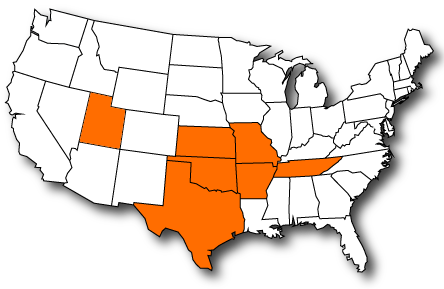When buying a home in Arkansas or Missouri, one of the key factors you might encounter is the Homeowners Association (HOA). Understanding what an HOA is and how it operates in these states is crucial for homeowners and prospective buyers. This guide will walk you through the basics of HOAs, their roles, benefits, drawbacks, and the specific regulations in Arkansas and Missouri.
What Is a Homeowners Association (HOA)?
A Homeowners Association (HOA) is a private organization formed within a community or residential development to manage and maintain common areas and enforce community rules. Homeowners’ associations (HOAs) are generally formed by real estate developers while building a residential community. After the development is complete, the HOA is managed by a board of directors, which is usually made up of homeowners elected by the residents.
The primary purpose of an HOA is to preserve the neighborhood’s aesthetic and property values by enforcing agreed-upon rules and guidelines. These rules can range from architectural standards to lawn care requirements. Additionally, HOAs are responsible for managing shared amenities such as swimming pools, parks, and clubhouses, ensuring that these facilities are well-maintained for the community’s enjoyment.

How HOAs Work in Arkansas
In Arkansas, HOAs are structured similarly to those in other states, but they also reflect local customs and legal requirements. The management of HOAs in Arkansas typically involves a board of directors elected by the homeowners within the community. This board oversees the enforcement of community rules, the maintenance of common areas, and the financial aspects of the HOA, such as collecting dues and managing budgets.
Common Rules and Regulations in Arkansas
HOAs in Arkansas often establish rules regarding property appearance, landscaping, and even the types of structures allowed on a homeowner’s property. For example, there may be regulations on the height of fences, the colors of exterior paint, or the types of vehicles that can be parked in driveways. These rules aim to preserve a uniform look throughout the community and safeguard property values.
Examples of Typical HOA Practices in Arkansas Communities:
- Regular maintenance of community amenities like swimming pools, parks, and tennis courts.
- Enforcement of parking regulations, particularly in neighborhoods with narrow streets.
- Coordination of community events to foster a sense of neighborhood unity.
How HOAs Work in Missouri
Missouri’s HOAs function similarly to those in Arkansas but with some state-specific nuances. Like their Arkansas counterparts, Missouri HOAs are governed by a board of directors elected by community members. The board’s responsibilities include managing the community’s common areas, enforcing rules, and handling the association’s finances.
Common Rules and Regulations in Missouri
Missouri HOAs may enforce rules concerning property modifications, such as adding new structures or changing the exterior design of a home. They may also regulate noise levels, pet ownership, and other factors that could impact the community’s quality of life.
Examples of Typical HOA Practices in Missouri Communities:
- Upkeep of communal green spaces and recreational amenities.
- Organizing neighborhood watch programs to enhance security.
- Implementing guidelines for exterior home improvements to ensure consistency in the neighborhood’s appearance.
Key Functions of an HOA
Regardless of the state, HOAs perform several essential functions within a community:
- Maintenance of Common Areas: HOAs are responsible for the upkeep of shared spaces such as parks, playgrounds, and community centers. Regular maintenance ensures these areas remain attractive and usable for all residents.
- Enforcement of Community Rules: One of the primary roles of an HOA is to enforce the community’s rules and regulations. These rules are established to maintain property values and ensure a pleasant living environment for all residents.
- Financial Management and Assessments: HOAs collect dues from homeowners to fund the maintenance of common areas and other community services. The board is responsible for managing these funds, creating budgets, and ensuring that the community’s financial needs are met.
Benefits of Living in an HOA Community
Advantages of Living in an HOA Community:
- Enhanced Property Maintenance and Community Aesthetics: HOAs ensure that all properties within the community adhere to certain standards, which helps maintain property values and enhances the overall appearance of the neighborhood.
- Access to Amenities and Community Services: Many HOA communities offer access to amenities such as pools, parks, and recreational facilities, which are maintained by the association for residents’ enjoyment.
- Community Engagement and Support: HOAs often organize events and activities that promote community engagement and foster a sense of unity among residents.
Potential Drawbacks of HOAs
While there are benefits, there are also some potential drawbacks to living in an HOA community:
- Restrictions and Regulations: HOAs impose rules that homeowners must follow, which can sometimes feel restrictive. For instance, there might be limitations on the type of landscaping you can do or the color you can paint your house.
- Fees and Assessments: Homeowners in HOA communities are required to pay regular dues, and sometimes special assessments, which can be a financial burden for some residents.
- Conflict Resolution and Governance Issues: Disputes can arise between homeowners and the HOA, particularly if residents feel that the rules are too strict or that the board is not managing the community’s funds effectively.
Comparison: HOAs in Arkansas vs. Missouri
When comparing HOAs in Arkansas and Missouri, there are several key similarities and differences:
- Similarities: Both states have HOAs that are governed by a board of directors elected by homeowners, and both enforce rules designed to maintain community standards and property values.
- Differences: The specific rules and regulations can vary between the two states due to local laws and cultural differences. For example, Missouri may have more stringent guidelines on property modifications, while Arkansas might focus more on maintaining natural landscapes within communities.
Regional Considerations: When deciding between an HOA community in Arkansas versus Missouri, potential homeowners should consider the local regulations and how they align with their personal preferences and lifestyle.
Conclusion
Understanding how HOAs operate in Arkansas and Missouri is essential for anyone considering moving to or purchasing a home in these states. While HOAs can offer significant benefits, such as enhanced property maintenance and community engagement, they also come with certain restrictions and financial responsibilities. By familiarizing yourself with the specific rules and practices in your state, you can make an informed decision about whether living in an HOA community is the right choice for you.
Curious about how HOAs work in your area? Explore our detailed guides for Arkansas and Missouri or contact G&G Independent Insurance for personalized advice!


